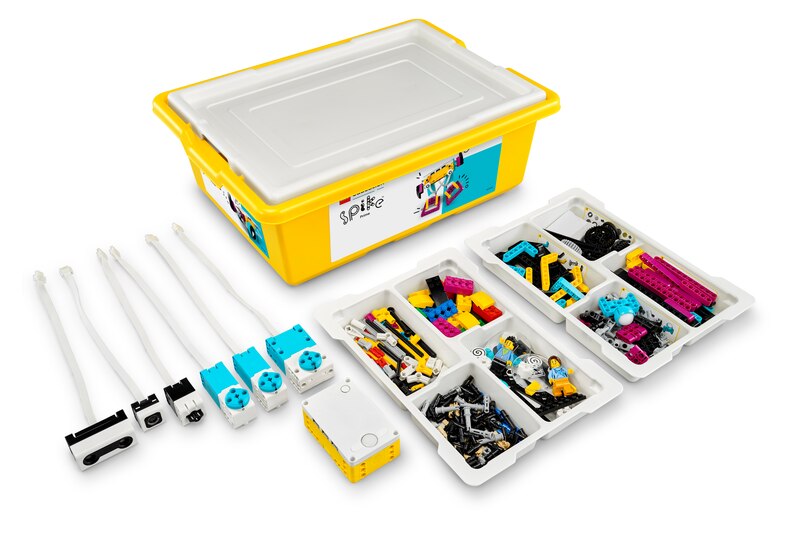Useful Tips of Teaching Robotics to Students
Teaching robotics in class can be a rewarding yet challenging experience for educators. As technology advances, robotics education is becoming increasingly popular, offering students valuable skills and preparing them for future careers in STEM fields. However, teachers must navigate a unique challenge to manage a robotic class effectively. In this guide, we will provide valuable tips and strategies for teachers to successfully manage a robotic class and inspire students to explore the fascinating world of robotics.
#1 Set Clear Learning Objectives
Before you start teaching robotics, it’s crucial to establish clear learning objectives for your class. Consider what you want your students to achieve by the end of the course. Are you focusing on programming skills, problem-solving, teamwork, or a combination of these? Defining your goals will help you design a curriculum that aligns with your objectives and ensures your students are on the right track.
#2 Create a Structured Curriculum
Developing a well-structured curriculum is essential for managing a robotic class effectively. Organize your lessons logically, starting with basic concepts and gradually building complexity. Ensure that while teaching robotics, your curriculum includes theoretical knowledge and hands-on activities to engage students actively in the learning process. Break down the curriculum into units or modules covering specific topics or skills and provide clear timelines for completing them.
#3 Choose the Right Robotics Kits
Selecting the appropriate robotics kits is crucial for your class’s success. Consider your students’ age and skill level when choosing the hardware and software platforms. Some popular options include LEGO ® Education SPIKE ™ Prime, LEGO ® Education BricQ Motion Kit, and LEGO ® Education SPIKE ™ Essential. Ensure the chosen kits align with your curriculum and are readily available to your students.
#4 Foster a Growth Mindset
Encourage a growth mindset when teaching robotics in a class by emphasizing the importance of perseverance and learning from failures. Robotics often involves trial and error, and students should understand that making mistakes is part of learning. Celebrate their successes and encourage them to view challenges as opportunities for growth.
#5 Promote Teamwork and Collaboration
Robotics projects may require dividing students into groups and teams. Teach your students the importance of effective communication, cooperation, and division of tasks. Assign roles within each team, such as programmer, builder, and designer, to ensure that all students contribute to the project’s success. Encourage group discussions and problem-solving sessions to enhance teamwork when teaching robotics. ching strategies based on the assessment results to meet your students’ needs better.
#6 Incorporate Real-World Applications:
Showcase the real-world applications of robotics to make the subject more engaging and relevant for your students. Various industries actively use robotics, including healthcare, manufacturing, and space exploration. Invite guest speakers or take field trips to robotics labs or companies to expose students to potential career paths.
#7 Provide Ample Hands-On Experience:
The hands-on aspect of teaching robotics is what excites students the most. Allocate plenty of class time for practical exercises and projects. Allow students to build and program robots, experiment with sensors and actuators, and complete challenges. Provide guidance and support as needed but encourage independent problem-solving and creativity.
#8 Integrate Coding Skills
Coding is a fundamental aspect of robotics education. Introduce students to programming languages commonly used in robotics, such as Python, Scratch, or C++. Start with basic coding concepts and gradually introduce more advanced techniques. Provide coding exercises and projects that align with the hardware you’re using.
#9 Offer Individualized Support
Recognize that students may have varying levels of prior knowledge and skills in robotics. Provide individualized support to help struggling students catch up and challenge advanced learners with more complex tasks.
#10 Assess Progress and Learning
Regularly assess your student’s progress and learning outcomes through various assessment methods, such as quizzes, tests, projects, and presentations. Provide clear grading criteria and give constructive feedback. Adjust your tea
By setting clear objectives, creating a structured curriculum, fostering a growth mindset, promoting teamwork, and providing hands-on experiences, educators can inspire their students to explore the exciting world of robotics. Remember that robotics education is about teaching robotics skills and nurturing problem-solving abilities, creativity, and a passion for lifelong learning. With dedication and effective teaching strategies, you can guide your students toward a brighter future in robotics.






Recent Comments